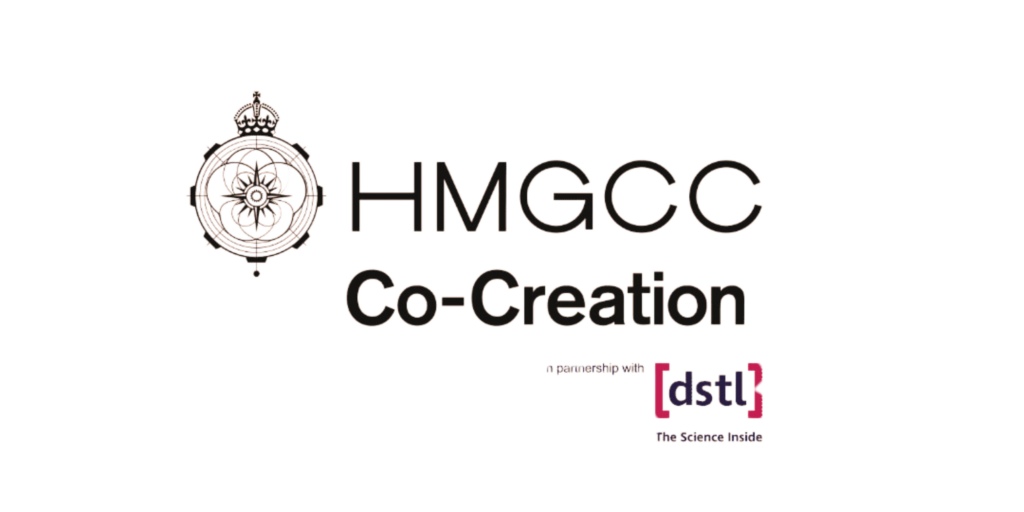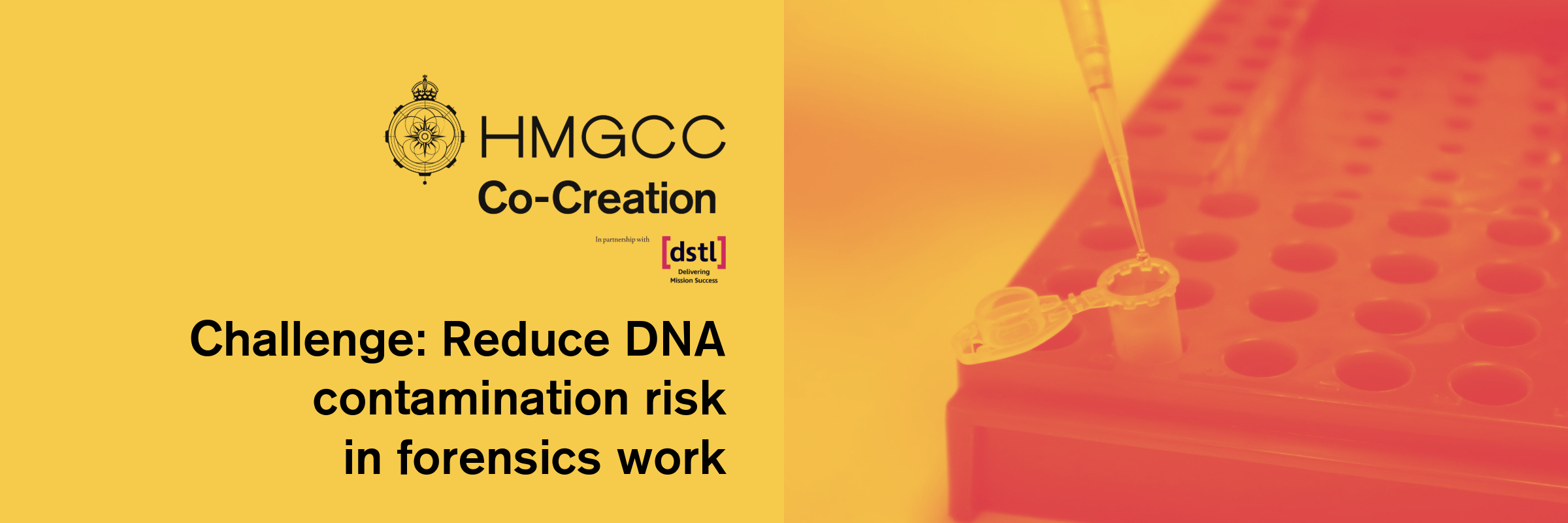
CHALLENGE SUSPENDED
Techniques to cut the risk of DNA contamination are being sought in the latest challenge launched by HMGCC Co-Creation.
The team is looking for effective solutions for cleaning DNA from items for use in mobile forensics facilities, to reduce the risk of contamination.
In this challenge, we want to hear from forensics specialists who understand biomaterial decontamination. This challenge could involve exploring the adaption of existing technology that may be used in other sectors, or new ideas on how to effectively and safely clean or decontaminate DNA.
Organisations are being asked to apply if, over a 12-week period, they can develop and demonstrate technology to meet this challenge. HMGCC Co-Creation will provide funding for time, materials, overheads and other indirect expenses.
The challenge
Context of the challenge
There are many reasons why the technical solutions that HMGCC manufactures for national security need high levels of cleanliness.
These reasons can range from the types of use, which could include building clean components for space and satellite applications, providing clean room guidance, or simply the need to avoid DNA cross contamination when working closely with law enforcement.
Traditionally DNA profiling is carried out in a dedicated laboratory run by an accredited forensic science provider, but advances in mobile ‘rapid’ DNA capabilities now allow for mobile solutions to be deployed in non-laboratory settings.
The gap
The effective cleaning of laboratory environments is a key recommendation by the UK Forensic Science Regulator (1). So, the act of carrying out DNA profiling with mobile, ‘rapid’ systems means special consideration has to be made to contamination risk.
Cleaning is needed for everything from consumables to tools, electronic equipment, and potentially whole rooms, including porous and non-porous materials. These items need to be cleaned of residual DNA without effecting their functionality.
Traditional cleaning methods, such as hypochlorite bleach or isopropanol alcohol (IPA) can fall short of cleanliness requirements and risk damaging equipment.
Whilst the market is awash with chemicals and guidance, there is still the need for a simple, quick, cost-effective mechanism for the decontamination of tools and products, capable of being used by non-forensic specialists.
[1] Forensic Science Regulator: DNA contamination controls: laboratory. https://www.gov.uk/government/publications/dna-contamination-controls-laboratory/dna-contamination-controls-laboratory-accessible
Example use case
Nicky is a forensics advisor at a mobile facility set up for disaster victim identification scenarios.
In mobile facilities, there are further challenges compared to a laboratory environment, so further efforts need to be made to avoid the risk of DNA cross-contamination.
Typically, disposable items are used to ensure no cross-contamination, but Nicky has spotted an opportunity to use advanced tools (e.g. 3D printed parts) and new electronic equipment that are not treated as disposable, as long as they can be sufficiently cleaned between uses.
She requires a relatively simple method to clean both inert tools and electronic equipment to reduce the chances of mistakes. It also needs to be quick so that is useable in a high stress situation. Crucially, it must be provable that DNA is removed to a certain standard.
Project scope
In this 12-week project, applicants should aim to deliver a demonstration to the sponsors. Those taking part should include forensics specialists who understand biomaterial and DNA contamination in their project team. We are open to adapting existing technology that is used in other sectors or new ideas for effective and safe cleaning/decontamination techniques. Promising and potentially viable work has been seen using ultrasonic baths to remove contaminants. However, there are likely to be other solutions not yet explored by HMGCC
This is open to Technology Readiness Levels (TRL) from 4 – 9. It is recommended that in proposals label both the existing TRL and TRL that would be expected by the end of 12 weeks. Essential, desirable and stretch targets are listed below.
Essential requirements:
- Demonstrate cleaning of non-electronic and electronic devices, detailing the efficacy of the solution.
- Must be willing to explore different solutions for non electrical and electrical devices.
- Ability to clean porous and non-porous materials.
- Must not damage the device being cleaned.
- Must be simple to use.
- Cleanliness post processing must be verifiable, either by the solution provider or, upon request, by HMGCC.
Desirable:
- Should clean an object as fast as possible.
- Should have a small footprint, around the size of shoebox.
Constraints:
- Could be used in a variety of spaces, from a temporary forensic facility to a clean room. In either situation, space is at a premium.
Not required:
- Horizon scanning only.
- Use of known existing solutions, such as bleach or IPA.
Key dates
Monday 9 June 2025
Competition opens
[Postponed] Tuesday 24 June 2025 at 11:00am
Online briefing call
Clarifying questions submission date
Tuesday 1 July 2025
Clarifying questions published
Thursday 10 July 2025 at 5:00pm
Competition closes
Thursday 24 July 2025
Applicants notified
Thursday 31 July 2025
Pitch day in Milton Keynes
Friday 8 August 2025
Commercial onboarding begins*
*Please note, the successful solution provider will be expected to have availability for a 1-hour onboarding call via MS Teams on the date to be specified to begin the onboarding/contractual process.
Monday 1 September 2025
Target project kick-off
Eligibility
This challenge is open to sole innovators, industry, academic and research organisations of all types and sizes. There is no requirement for security clearances.
Solution providers or direct collaboration from countries listed by the UK government under trade sanctions and/or arms embargoes, are not eligible for HMGCC Co-Creation challenges.
